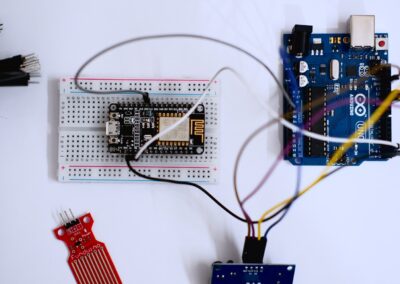The Importance of Authenticity in Firmware Updates
Protecting IoT Devices with Verified Firmware Updates
Ensuring the authenticity of firmware update sources is critical in protecting IoT devices from malicious updates. In the fast-evolving technological landscapes of Saudi Arabia and the UAE, where cities like Riyadh and Dubai are becoming global hubs for innovation, the security of connected devices is paramount. Firmware updates are essential for maintaining device functionality and security, but they also pose a significant risk if not properly authenticated. Malicious actors can exploit firmware vulnerabilities to inject harmful code, potentially leading to data breaches, device malfunctions, and network compromises. Therefore, it is imperative to verify the authenticity of firmware update sources to safeguard IoT ecosystems.
Methods for Verifying Firmware Update Sources
Various methods can be employed to ensure the authenticity of firmware update sources. One effective approach is the use of cryptographic signatures. Firmware files are digitally signed by the manufacturer using a private key, and the corresponding public key is used to verify the signature before installation. This ensures that the firmware has not been altered since it was signed. Another method is the implementation of secure boot processes, which verify the integrity of the firmware at each boot cycle. Additionally, establishing a trusted public key infrastructure (PKI) within the IoT ecosystem helps in managing and verifying digital certificates, further enhancing security. These methods collectively ensure that only authenticated firmware updates are applied to devices, protecting against malicious interventions.
Case Studies of Firmware Security in the Middle East
In regions like Saudi Arabia and the UAE, where digital transformation is accelerating, ensuring firmware security is particularly relevant. For example, in Riyadh, smart city initiatives rely heavily on IoT devices for various applications such as traffic management and public safety. Any compromise in firmware integrity could have severe repercussions on urban infrastructure. Similarly, Dubai’s commitment to becoming a smart city involves widespread deployment of IoT technologies, making firmware security a top priority. These cities have started to implement rigorous verification processes for firmware updates, setting a benchmark for other regions. By learning from these case studies, organizations can understand the practical implications and benefits of ensuring firmware authenticity.
Implementing Robust Firmware Verification Processes
Cryptographic Signatures and Secure Boot Processes
Cryptographic signatures and secure boot processes are foundational to verifying firmware authenticity. When a firmware update is released, the manufacturer signs the update using a private key. Devices receiving the update use the corresponding public key to verify the signature. This cryptographic process ensures that the firmware has not been tampered with. Secure boot processes add another layer of security by verifying the firmware’s integrity each time the device starts up. These measures prevent unauthorized firmware from being installed and executed, protecting devices from potential exploits. Implementing these technologies requires a comprehensive understanding of cryptography and secure coding practices, which are becoming increasingly vital in modern IoT deployments.
Role of Public Key Infrastructure (PKI) in Firmware Security
Public Key Infrastructure (PKI) plays a crucial role in managing and verifying digital certificates used in the authentication of firmware updates. PKI provides a scalable solution for establishing trust within an IoT ecosystem. By issuing and managing digital certificates, PKI ensures that only authorized entities can release and install firmware updates. This framework is particularly beneficial in large-scale deployments seen in smart cities across the Middle East. For instance, in cities like Riyadh and Dubai, the integration of PKI helps in maintaining the security and integrity of numerous IoT devices deployed in various sectors, from healthcare to transportation. By leveraging PKI, organizations can create a secure environment that mitigates the risks associated with firmware updates.
Best Practices for Maintaining Firmware Security
Maintaining firmware security involves adopting best practices that ensure ongoing protection against malicious updates. Regularly updating cryptographic keys and certificates is essential to prevent them from becoming compromised. Organizations should also conduct periodic security audits to identify and address potential vulnerabilities in their firmware update processes. Another critical practice is educating employees and users about the importance of firmware security and how to recognize potential threats. By implementing these best practices, businesses in Riyadh, Dubai, and beyond can enhance their cybersecurity posture, protecting their IoT ecosystems from malicious actors and ensuring the continuous reliability of their connected devices.
Conclusion
Ensuring the authenticity of firmware update sources is vital for protecting IoT devices from malicious updates. By leveraging methods such as cryptographic signatures, secure boot processes, and Public Key Infrastructure (PKI), organizations can verify the integrity of firmware updates, safeguarding their IoT ecosystems. The experiences of smart cities like Riyadh and Dubai highlight the importance of robust firmware security practices. Adopting these practices not only protects against cyber threats but also builds trust in the reliability and security of connected devices, paving the way for a secure and innovative future in the Middle East and beyond.
#FirmwareSecurity #IoTSecurity #Cybersecurity #FirmwareUpdate #PublicKeyInfrastructure #PKI #CryptographicSignatures #SecureBoot #SaudiArabia #UAE #Riyadh #Dubai































